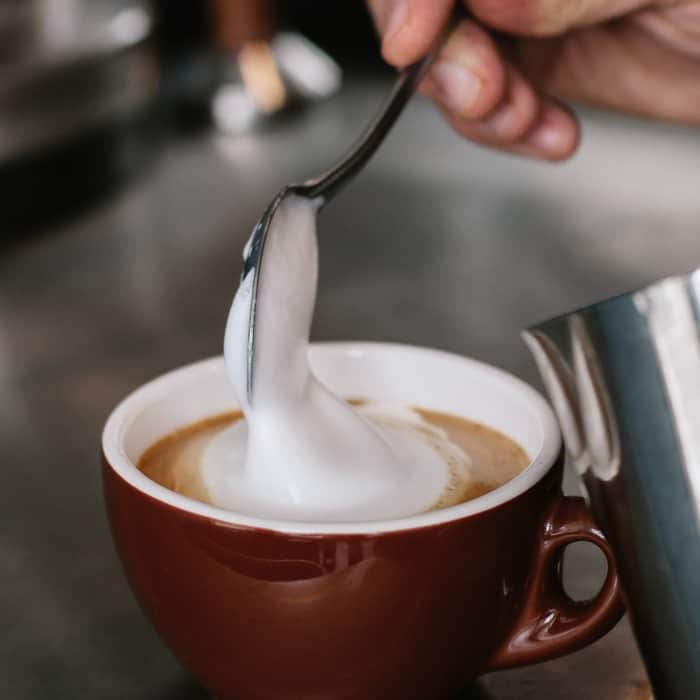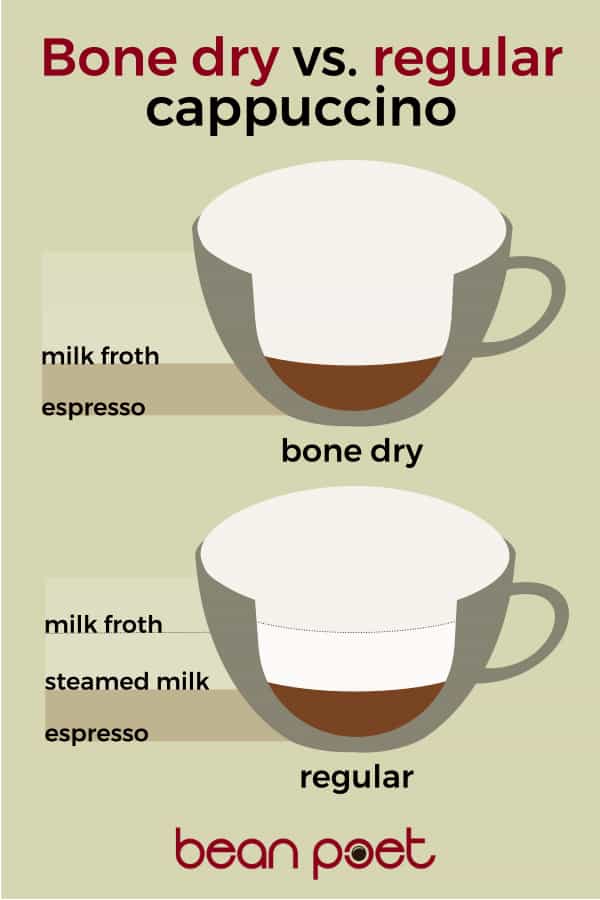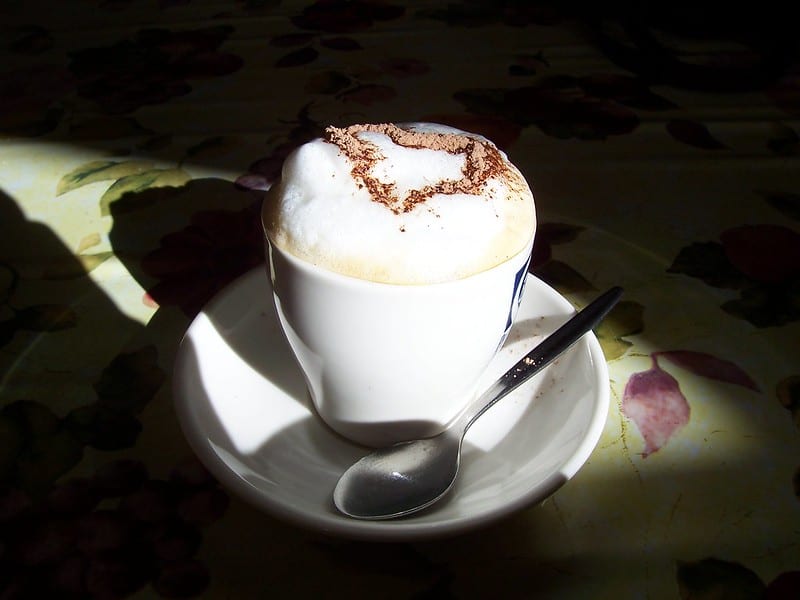Last Updated on December 10, 2023
You’ve heard of dry white wine, a dry martini, even dry humor, but what is a bone dry cappuccino?
A bone dry cappuccino is a shot of espresso topped only with milk foam. Where a barista would add steamed milk to a regular cappuccino before topping it with milk foam, she skips that step for a bone dry cappuccino. It’s just coffee and foam.
Cappuccino basics
The cappuccino is a classic coffee drink. It originated in Vienna in the 18th century, when it was really just coffee mixed with cream and sugar. This mix took on a light brown color that matched the robes of Capuchin friars, an order of Catholic devotees. That’s where it got its name.
Nowadays, a cappuccino starts with espresso, so the modern-day version can be traced to early 20th century Italy, shortly after the invention of the espresso machine in Turin.
Typically, a cappuccino is prepared with a double shot of espresso and steamed milk, with foamed milk on top. The perfect cappuccino contains one-third of each.

Variations on the cappuccino
The best way to make a good thing last is to make it appealing to a wide variety of people. Cappuccino is no different. Coffee in general is among the most diversified consumer staples. Think about all the different roasts and flavors and roasts. Then consider all the ways you can make it your own.
Cappuccino has a number of variations, too. For example, a cappuccino freddo is a cold version of the classic cappuccino, topped with cold frothed milk. Then you have wet, dry, and flavored cappuccinos. Not all cappuccinos are made with the integrity of the original Italian cappuccino. By substituting almond milk or injecting a shot of hazelnut syrup, for example, a barista can customize any cappuccino to the customer’s preference.
The bone dry cappuccino
In a bone dry cappuccino, the phrase “bone dry” signals the absence of steamed milk. The drink consists only of espresso and milk foam. Where a standard cappuccino would contain a mixture of hot milk and espresso, giving it that “cappuccino” color, a bone dry cappuccino has just brown espresso in the bottom, and white foam on top.

It’s not a commonly ordered drink, because it lacks the natural sweetness that milk gives espresso, but some certainly enjoy it.
Dry vs. bone dry cappuccino
The difference between a dry and a bone dry cappuccino is steamed milk. Dry cappuccinos still have steamed milk—they just have less than a standard cappuccino, which is equal parts espresso, steamed milk and foamed milk. In a dry cappuccino, the reduction in steamed milk is usually compensated with more foamed milk on top.
What is a wet cappuccino?
A wet cappuccino simply goes in the opposite direction of a dry cappuccino. The proportion of steamed milk is increased while the proportion of foamed milk is decreased. So you are starting to move in the direction of a caffe latte.
How to make a bone-dry cappuccino
Here is the basic bone dry cappuccino recipe:
- Warm your drinking cup with hot water
- Froth your milk
- Set foam aside and prepare your espresso
- Pour espresso into warmed cup
- Top with plenty of foamed milk
Great espresso is the foundation. Those who prefer bone dry clearly do not want any steamed milk compromising the flavor of their espresso, so it’s important to start with quality espresso.
Steamed milk vs. foamed milk
Since most of your bone dry cappuccino consists of foamed milk, you need to know the difference between steamed milk and foamed milk (sometimes called milk froth). Both can be made using the steam wand on your espresso machine. The difference is in the technique.
To make steamed milk, you immerse your steam wand into the milk and allow it to swirl and heat the milk until it reaches the desired temperature, usually around 150 F.
How to make dry cappuccino foam
Foamed milk requires aeration, or the introduction of air bubbles into the milk.
To achieve this, you should use a relatively low-fat milk. Skim milk or 1% work best. Whole milk is heavy, so it doesn’t accommodate the introduction of tiny, light bubbles very well.
Keep the tip of the steam wand just below the surface of the milk, very close to the top. You’ll hear a special hissing/spitting sound if you’ve got it right, and the milk will begin to foam and expand. As it rises, keep lowering your pitcher so that the tip of the wand remains right near the surface and you maintain that hissing sound.
And that’s it! You’ll have a nice, warm foam pillow to layer on top of your espresso. Bone dry cappuccino fans believe this layer of foamed milk provides some insulation for the espresso, keeping it hot longer, which makes perfect sense to us.


